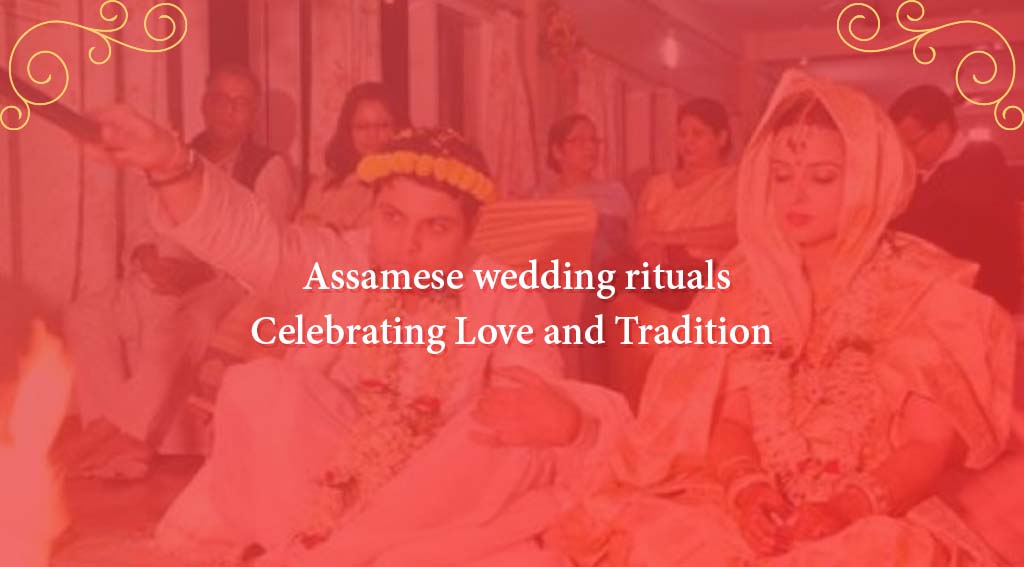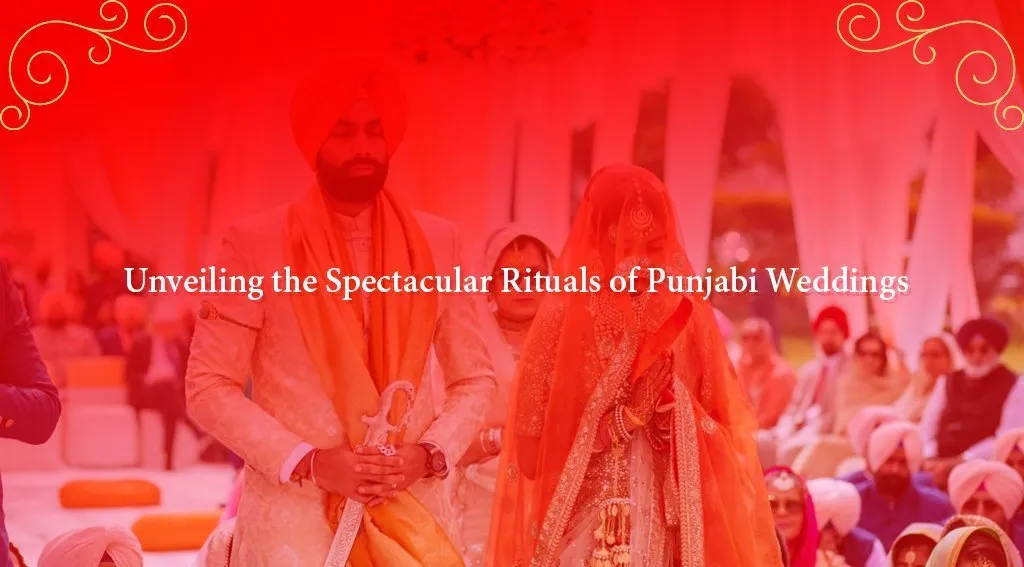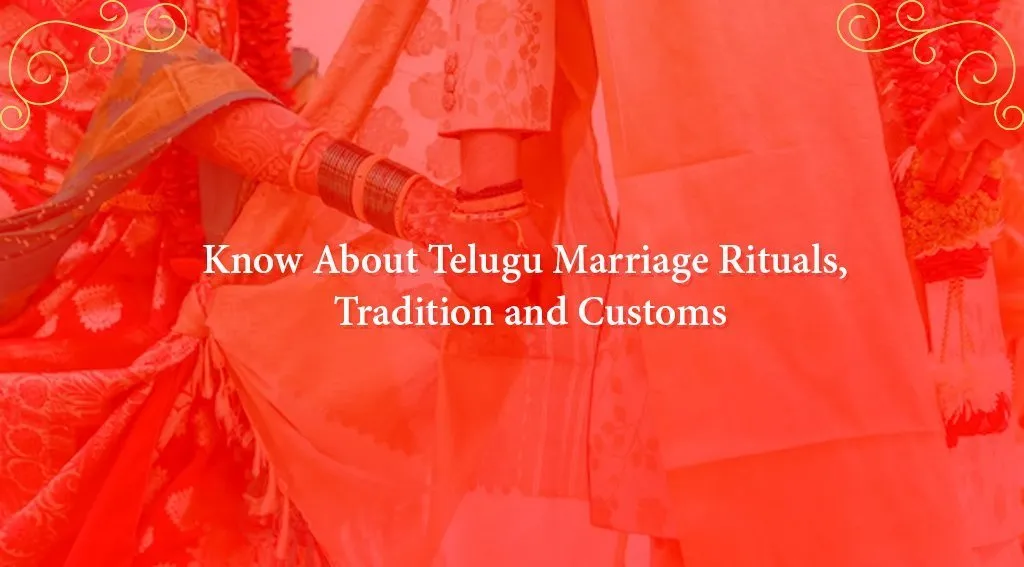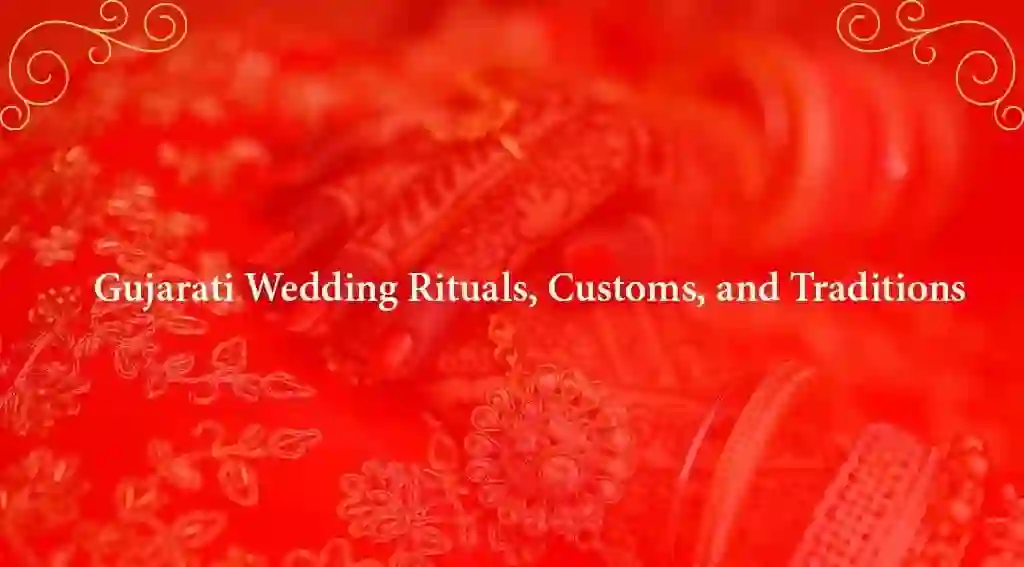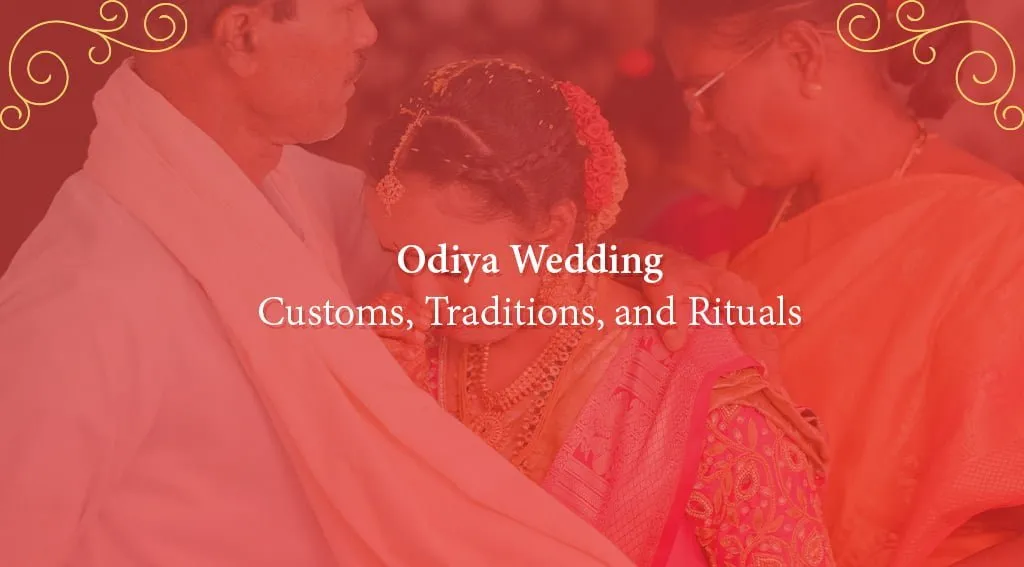Assam, the northeastern state of India, is known for its rich cultural heritage and diverse traditions. Assamese culture’s most significant aspects are its elaborate wedding rituals and customs. Assamese wedding rituals are a beautiful blend of traditional practices, vibrant attire, and heartfelt ceremonies.
In this article, we will explore the fascinating world of Assamese wedding rituals, customs, pre-wedding traditions, wedding ceremonies, and post-wedding celebrations. Join us on this journey as we dive into the enchanting realm of Assamese weddings.
Assamese Wedding Rituals
Pre-Wedding Celebrations
Juran Diya: The Exchange of Gifts

Juran Diya is an integral part of Assamese wedding customs. It involves the exchange of gifts between the families of the bride and groom. The groom’s family presents traditional Assamese attire, jewelry, and other valuable items to the bride, while the bride’s family reciprocates with gifts for the groom.
This ritual strengthens the bond between the families and marks the formal acceptance of the marriage alliance.
Haldi Kumkum: The Auspicious Beginnings
The Assamese wedding festivities commence with the Haldi Kumkum ceremony, a pre-wedding ritual that signifies purity and blessings. During this ceremony, the bride and groom are anointed with a paste of turmeric and sandalwood, which is believed to bring a radiant glow to their skin.
Married women apply vermilion (kumkum) on the bride’s forehead to symbolize prosperity and marital bliss.
Also Read | Band, Baaja, Baraat: Wedding-Like Festivity Revive Contest in Lucknow
Biya Naam: The Naming Ceremony
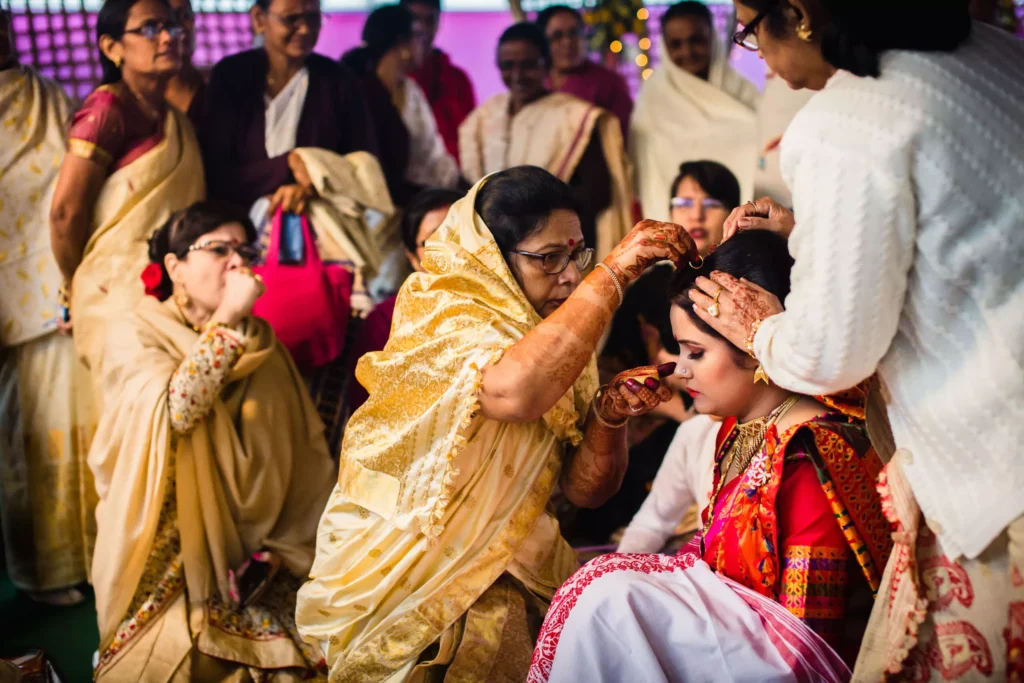
Biya Naam is a unique pre-wedding ritual in Assamese weddings. It involves the recitation of prayers and hymns by a group of old women known as “Biya Naam Gos“. The bride’s name is chanted along with the names of her ancestors, seeking their blessings for a prosperous married life.
This ritual holds immense cultural significance and is believed to bring good luck to the couple.
Pani Tola: The Sacred Bath
Pani Tola, also known as the sacred bath, is a symbolic purification ritual performed on the wedding day. The bride and groom take a ceremonial bath with holy water infused with herbs and flowers.
This ritual signifies the cleansing of their body, mind, and soul, preparing them for a new beginning filled with love and devotion.
Also Read | Strengthen Your Marriage Through the Magic of Travel
Mekhela Chadar: The Graceful Attire
The Assamese bride adorns herself in a traditional attire called Mekhela Chadar, which consists of a two-piece garment. The Mekhela, a cylindrical skirt, is draped around the waist, while the Chadar, an unstitched cloth, is elegantly draped over the shoulder.
The groom wears a traditional dhoti and kurta, completing the regal look. The vibrant colors and intricate designs of the attire add to the charm of the Assamese wedding.
Assamese Wedding Ceremonies
Anuranan
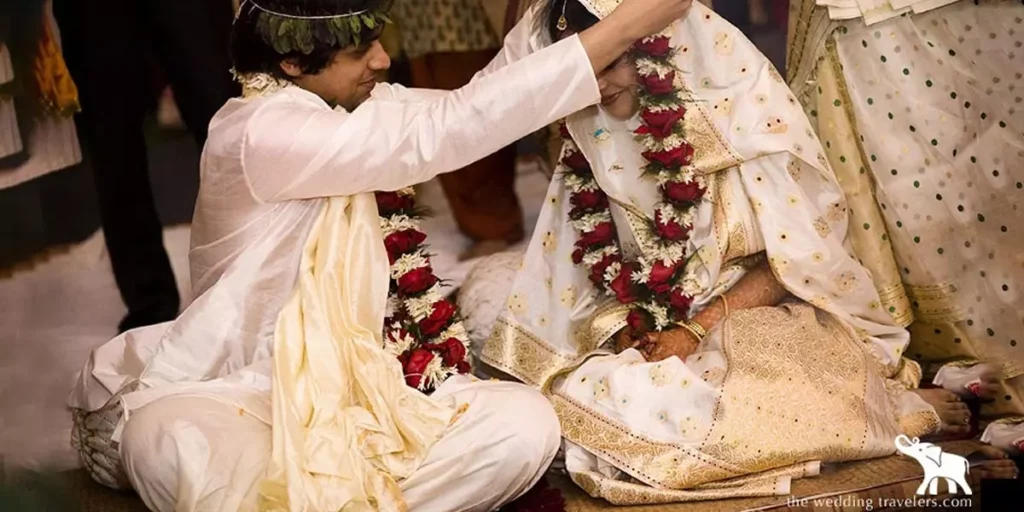
Anuranan, the engagement ceremony, marks the formal announcement of the wedding alliance. The families exchange rings and seek the blessings of the elders. This ceremony brings joy and excitement as the couple embarks on their journey towards marital bliss.
Biye: The Wedding Ceremony
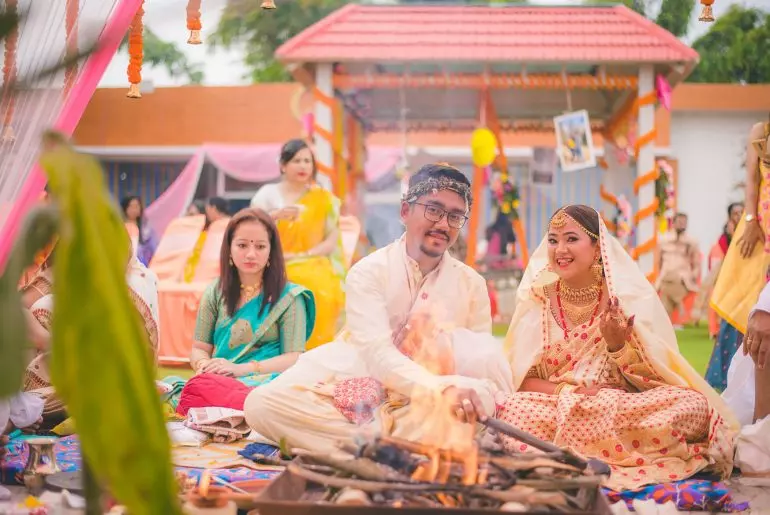
The Biye, or wedding ceremony, is the most significant event in Assamese wedding rituals. It takes place in the presence of family members, relatives, and close friends. The wedding venue is beautifully decorated with flowers, lights, and traditional motifs, creating a festive ambiance.
The bride and groom take seven symbolic steps together, known as the Saat Phere, around a sacred fire, representing their lifelong commitment and companionship.
Also Read | Best Wedding Anniversary Wishes in 2023
Uruli Binai: The Traditional Feast
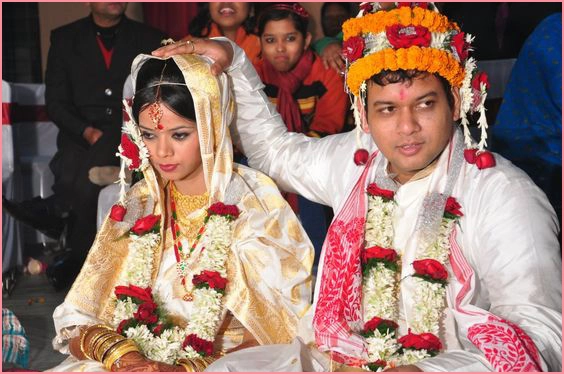
Uruli Binai is a grand feast hosted by the groom’s family after the wedding ceremony. It showcases the rich culinary traditions of Assam, with a wide array of delectable dishes served on traditional brass utensils called Uruli. The guests indulge in traditional Assamese delicacies, savoring the flavors and celebrating the union of two souls.
Bidaai: The Farewell
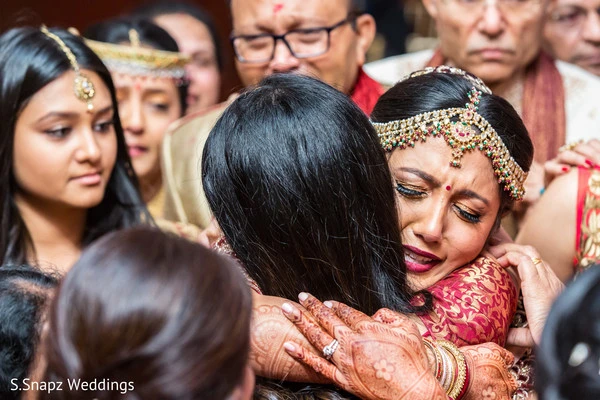
Bidaai is an emotional moment when the bride bids farewell to her parents and siblings to start a new chapter of her life with her husband. Tears mix with smiles as the bride’s family showers her with blessings and good wishes. It is a poignant moment that signifies the transition from one family to another.
Post-Wedding Celebrations
Xoruoraa: The Welcome Ceremony
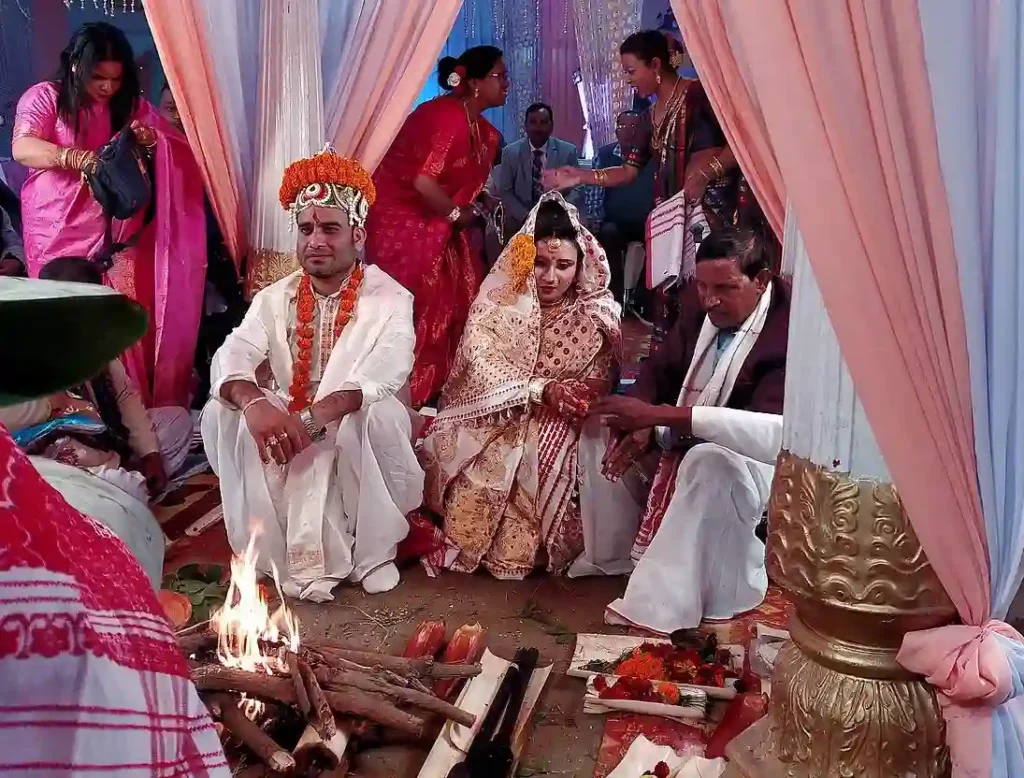
Xoruoraa is a warm and joyous ceremony held at the groom’s house to welcome the newlywed couple. The bride is introduced to her new family and is showered with love and affection. Traditional Assamese songs and dances fill the air, creating an atmosphere of celebration and happiness.
Gamusa Sharing: Symbol of Love and Unity
Gamusa, a traditional Assamese cloth, holds immense significance in Assamese culture. After the wedding, the bride and groom exchange Gamusas as a symbol of love and unity. It represents their commitment to supporting and caring for each other throughout their married life.
Also Read | 222+ Heart-Touching Romantic Birthday Wishes For Your Boyfriend
Khol Dhora: Welcoming the Bride to Her New Home
In the Khol Dhora ceremony, the groom’s family welcomes the bride into her new home. She is greeted with warmth, love, and a traditional Assamese gamosa (a handwoven cloth) signifying her acceptance into the family.
Ghor Gosoka
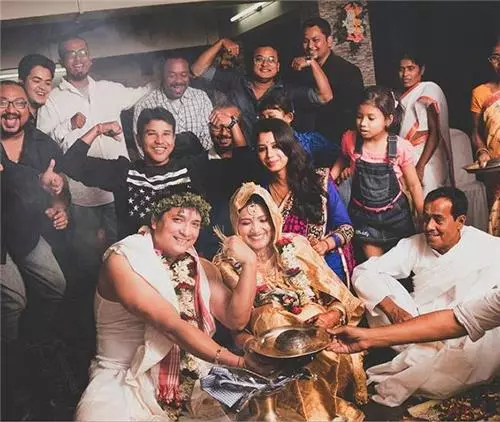
“Ghor Gosoka” literally translates to “teasing in the groom’s house.” It is a light-hearted way for the bride and groom’s families to bond and establish a warm relationship. The ritual signifies the acceptance of the bride into the groom’s family and the welcoming of new relationships.
Xajapon: The Blessing Ceremony
Xajapon is a Post-Assamese wedding ritual where the couple seeks blessings from the elders of both families. The old members offer their blessings, advice, and good wishes to the couple, imparting their wisdom and experience. This ceremony symbolizes the importance of family values and the role of elders in guiding the newlyweds.
Khuba Khubi
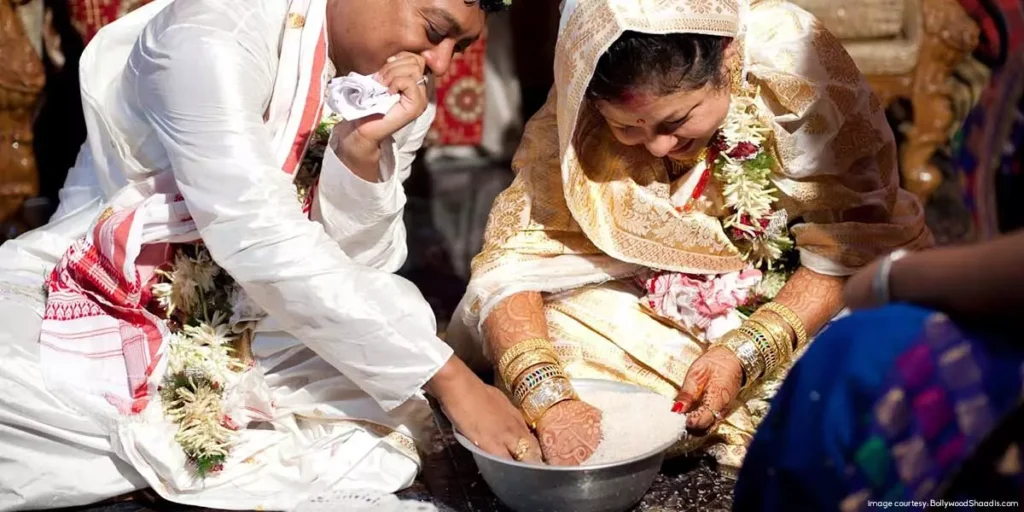
“Khuba Khubi” is an Assamese phrase that is often used during post-wedding rituals and celebrations in Assamese weddings. It is an expression of joy, happiness, and excitement. The phrase “Khuba Khubi” can be loosely translated to “very happy” or “extremely joyful” in English.
Conclusion
Assamese wedding rituals are a beautiful amalgamation of age-old traditions, colorful rituals, and heartfelt ceremonies. The customs and rituals associated with Assamese weddings showcase the rich cultural heritage of Assam. As the newlywed couple embarks on their journey of togetherness, they carry with them.
What are the essential pre-wedding rituals in Assamese weddings?
Some of the essential pre-wedding rituals in Assamese weddings include Haldi Kumkum, Juran Diya, Biya Naam, and Pani Tola.
What is the significance of the Saat Phere in an Assamese wedding?
The Saat Phere, where the couple takes seven symbolic steps together, represents their commitment to each other and the seven vows of marriage.
What is the traditional attire worn by Assamese brides?
Assamese brides adorn themselves in a graceful attire called Mekhela Chadar, which consists of a two-piece garment.
How long do Assamese wedding celebrations typically last?
Assamese wedding celebrations can last anywhere from a few days to a week, depending on the customs and traditions followed by the families involved.

